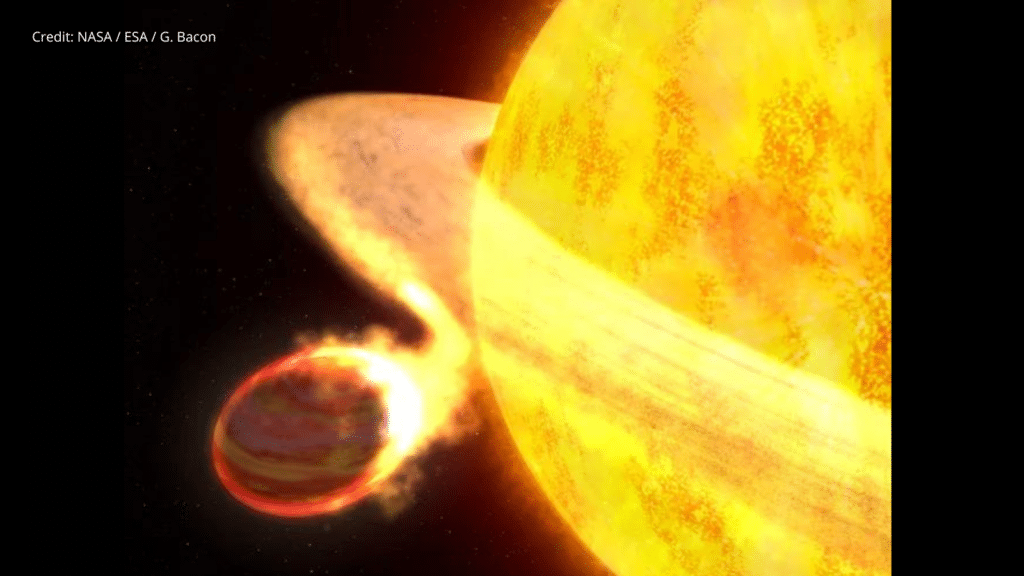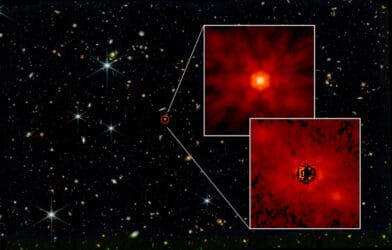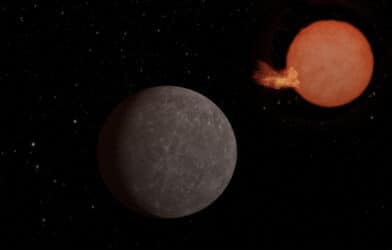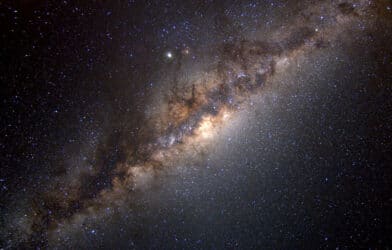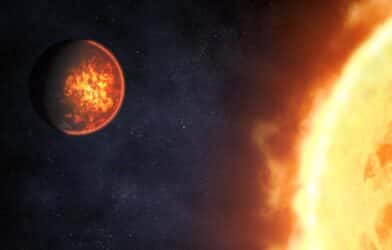Every romance has its tidal forces — the push and pull between partners as their relationship evolves over time. The same is true for stars and the giant planets that orbit them in tight embraces. Just as the Moon’s gravity raises tides in Earth’s oceans, a closely orbiting “hot Jupiter” exoplanet can deform its host star, creating tidal bulges. The resulting friction between the bulges and the planet’s gravity causes the planet’s orbit to gradually decay until it spirals into the star. But in some star-planet pairs, like WASP-12b which is falling towards its star surprisingly quickly, models of this process fail to fully explain the rapidly shrinking orbit.
A new study by astronomers from Durham University and published in The Astrophysical Journal Letters proposes an intriguing explanation for the case of missing orbital decay in certain star-planet systems: hidden magnetic fields within the star, generated by its churning core. Their models show this magnetism can provide the extra friction needed to hurry along a planet’s demise through a novel “wave conversion” mechanism.
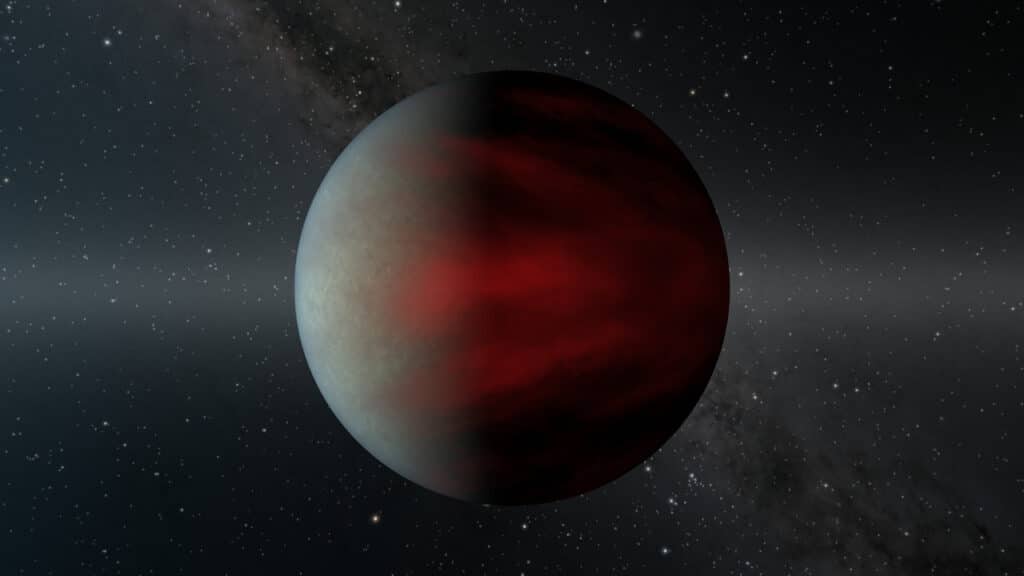
“This new mechanism has wide reaching implications for the survival of short period planets and particularly hot Jupiters,” says lead study author Dr. Craig Duguid, of Durham University, in a media release. “It opens a new avenue of tidal research and will help guide observational astronomers in finding promising targets to observe orbital decay. It is also quite exciting that this new mechanism could be observationally tested within our lifetime.”
The process works like this: as a planet raises tides on its host star, it generates waves that propagate through the star’s interior as gravity tries to restore equilibrium — similar to how jiggling a bowl of Jello creates ripples. When these waves encounter a strong magnetic field, such as that produced by turbulent motions in the star’s core, they can abruptly transform into magnetic waves. The magnetic waves then dissipate rapidly as they propagate outwards, bleeding energy from the planet’s orbit more efficiently than tidal forces alone.
The wave conversion phenomenon was first proposed to explain certain oscillations in red giant stars, but its role in planetary dynamics had not been explored. Dr. Duguid’s team realized it could be key for a subset of stars between 1.2 to 1.6 times the mass of the Sun — those with convective cores that roil like a boiling pot of water, generating powerful magnetic fields. Hot Jupiters orbiting these F-type stars were predicted to be relatively safe from tidal decay, because the gravity waves they trigger cannot penetrate into the star’s core and break to release their energy. Wave conversion overturns that assumption.
To test the idea, researchers simulated the evolution of F-type stars with hot Jupiters over billions of years. They found that in all cases, the stars’ magnetic fields eventually grew strong enough to shred apart the gravity waves and trigger orbital decay, often for a substantial portion of the star’s lifetime. The results neatly match the inferred properties of WASP-12b, an emblematic hot Jupiter that has perplexed astronomers with its apparent death spiral.
The implications extend beyond just one planet. Over the past decade, dozens of hot Jupiters have been found slowly spiraling into their stars, as revealed by subtle shifts in the timing of their transits. The wave conversion mechanism could be ubiquitous in these systems, shaping the long-term evolution and survival of close-in giant planets. It may also explain the paucity of hot Jupiters around F-type stars past a certain age — they have already been devoured by the combined tidal and magnetic forces from their host.

Moreover, the process is not limited to hot Jupiters; smaller planets can trigger wave conversion too, as long as they orbit close enough for tides to take hold. This includes the so-called “ultra-short period” planets, which skim their stars in just a few hours. Many of these scorched worlds could be in the final throes of a magnetically-mediated death spiral.
As astronomers continue to map out planetary graveyards around other stars, wave conversion may prove to be the missing piece in the puzzle of orbital decay. The next step will be to look for more systems where the mechanism can be caught in the act, as hot Jupiters and smaller planets pirouette towards their eventual demise in their stars’ churning magnetic ballet.
